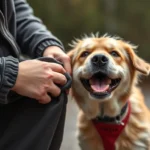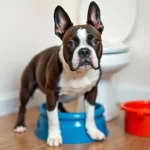
Introduction
The Cane Corso is a majestic breed known for its loyalty, intelligence, and protective nature. Originating from Italy, this dog was bred for guarding and hunting large game, showcasing a rich history that contributes to its unique traits. With a powerful physique, the Cane Corso is not just an impressive sight but also a devoted companion.
Training a Cane Corso is essential for various reasons. Behavioral issues can arise in untrained dogs, leading to challenges in social interactions and even dangerous situations. Effective training not only enhances safety but also fosters a well-adjusted and social dog. In this comprehensive guide, we will explore various training techniques tailored specifically for the Cane Corso.
Understanding the Cane Corso
Breed Characteristics
The Cane Corso is a large breed, typically weighing between 88 to 120 pounds and standing 24 to 28 inches tall at the shoulder. Its coat is short and dense, coming in a variety of colors including black, fawn, and brindle. Their strong build and commanding presence make them stand out.
In terms of temperament, Cane Corsos are known for their loyalty and protective instincts. They are often reserved around strangers but deeply affectionate with their families. Their intelligence and eagerness to please make them highly trainable, though they can also exhibit stubbornness at times.
Common Behavioral Traits
Cane Corsos possess strong natural instincts, including guarding and herding. These traits can manifest in protective behaviors, which, if left unchecked, may lead to over-guarding or aggression. Social behavior is another critical aspect, as these dogs thrive on interaction, both with humans and other pets.
However, potential challenges in training exist. Cane Corsos can be dominant and may test boundaries. Understanding these traits is crucial for effective training, as it helps owners anticipate and mitigate issues before they escalate.
Preparing for Training
Essential Training Supplies
Before embarking on training, ensure you have the necessary supplies. Key items include:
- Leashes and collars: A sturdy leash and a well-fitted collar or harness are essential for control during training sessions.
- Training treats and toys: High-value treats can motivate your Cane Corso, while toys can make training sessions enjoyable and engaging.
- Crates and playpens: These tools are useful for establishing boundaries and can aid in house training.
Establishing a Training Environment
Choosing the right training environment is vital. Indoor spaces should be quiet and free from distractions, while outdoor areas should be safe and secure. Minimizing distractions allows your Cane Corso to focus better during training sessions. Additionally, consider safety hazards, especially in outdoor settings, to ensure a conducive training atmosphere.
Setting Realistic Goals
Setting achievable goals is crucial for effective training. Break down training into short-term and long-term objectives. Understand that each dog is unique, and their needs may vary; thus, customizing your approach is essential. Consistency in training practices reinforces learning and establishes a solid foundation.
Basic Training Commands
Essential Commands to Teach
Teaching basic commands is an excellent starting point for any training regimen. Key commands include:
- Sit
- Stay
- Come
- Heel
These commands form the foundation for more advanced training and help establish control.
Techniques for Teaching Commands
Utilize positive reinforcement methods to encourage good behavior. This strategy involves rewarding your Cane Corso with treats or praise when they successfully follow a command. Clicker training is another effective technique that uses a sound to mark desired behaviors, followed by a reward.
Timing and repetition are also critical. Ensure you reward your dog immediately after they perform the desired action, reinforcing the connection between the command and the behavior. Consistent practice will enhance your Cane Corso’s learning experience.
Advanced Training Techniques
Socialization
Early socialization is vital for a Cane Corso. Expose your dog to various environments, people, and other animals to build their confidence and adaptability. Safe exposure helps prevent fear-based aggression and promotes positive interactions.
Handling Aggression
Identifying signs of aggression in your Cane Corso is crucial for effective training. Look for body language cues such as raised hackles, growling, or lunging. Training methods to manage aggressive behavior include redirecting their focus, using commands, and rewarding calm behavior.
In cases of severe aggression, seeking professional help is advisable. Experienced trainers can provide tailored strategies to address specific issues effectively.
Obedience Training
Obedience training is essential for Cane Corsos to ensure they are well-behaved and responsive. Teaching advanced commands, such as down and leave it, can enhance your dog’s control and safety. Incorporate distractions into training sessions gradually, helping your dog learn to focus amidst various stimuli.
Maintaining Training Consistency
Daily Training Routines
Establishing a daily training routine is key to reinforcing learned behaviors. Regular practice helps solidify commands and builds a strong bond between you and your Cane Corso. Mix up training sessions with different activities to keep them engaging and prevent boredom.
Integrating training into daily activities can also enhance the learning experience. For example, practicing commands during walks or playtime can reinforce training in a natural context.
Tracking Progress
Keeping a training journal can be beneficial for monitoring your Cane Corso’s progress. Note any behavior changes and improvements, and assess whether your training methods are effective. Adjusting your approach based on observed progress ensures that your training remains effective and relevant.
Dealing with Setbacks
Setbacks are a normal part of the training process. Common challenges may include regression in learned behaviors or increased stubbornness. Patience and persistence are crucial during these times. If you encounter persistent issues, consider seeking guidance from a professional trainer who can offer additional strategies and support.
Conclusion
In summary, training a Cane Corso is essential for fostering a harmonious relationship and ensuring safety. Starting early and maintaining consistency in training practices can lead to a well-behaved and sociable dog. As an owner, embracing the training journey alongside your Cane Corso will yield rewarding experiences for both of you.
Sharing experiences with fellow Cane Corso owners can also provide valuable insights and encouragement. Remember, the journey of training is ongoing, and every small success contributes to a happier, more balanced dog.
FAQs
What is the best age to start training a Cane Corso?
Starting training as early as 8 weeks is recommended, focusing on socialization and basic commands.
How long should training sessions last?
Sessions should be around 5-15 minutes for puppies, gradually increasing to 20-30 minutes for adult Cane Corsos.
Can a Cane Corso be trained off-leash?
Yes, but it requires advanced training and a strong recall command, ensuring your dog can be trusted in open environments.
What should I do if my Cane Corso is not responding to training?
Evaluate your training methods, ensure you are consistent, and consider seeking help from a professional trainer if needed.









